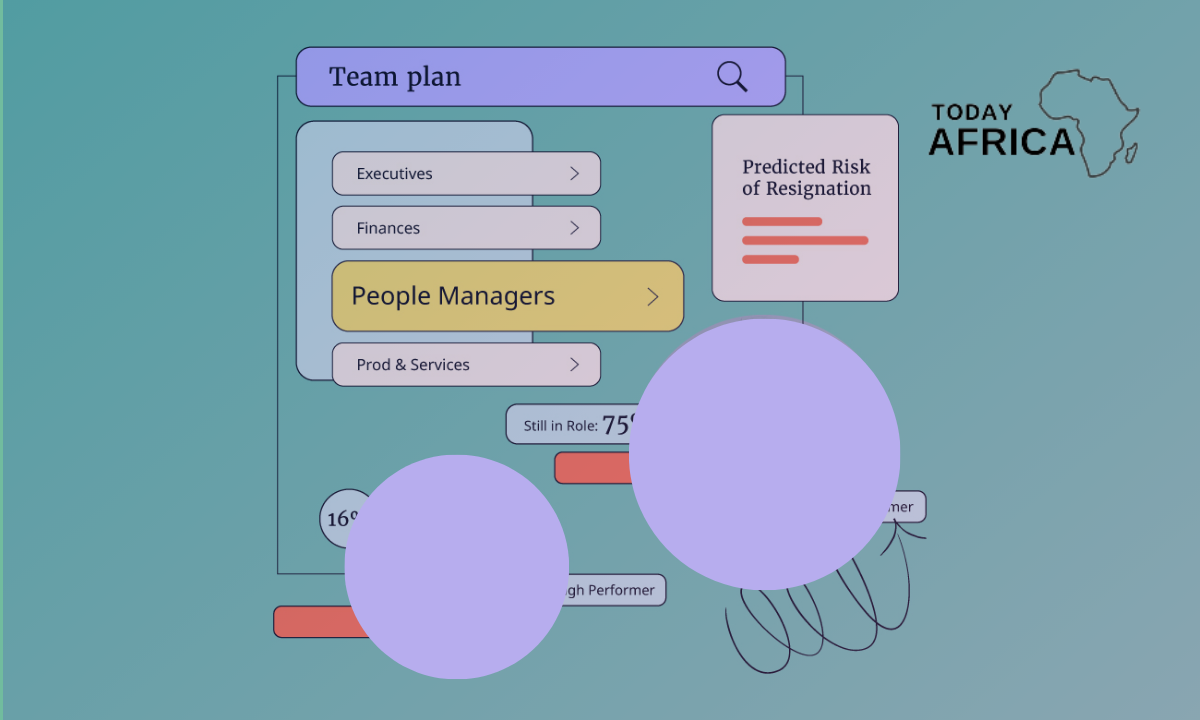Looking for a great home business opportunity that requires no financial investment?
Then you should check out virtual recruiting. As a virtual recruiter, you help businesses find candidates for their job openings.
From your remote location, you use the Internet to research free resume databases and use a variety of other free Internet resources to “source” candidates.
When you find and refer a candidate that gets hired, the recruiting fee can be substantial to live your dream life. So how do you get into virtual recruiting?
Let’s dive in and answer the question.
What is a Virtual Recruiter?
A virtual recruiter is an individual who identifies, sources, and recruits candidates for job openings within an organization.
They use digital tools and technologies to connect with potential candidates and manage the hiring process, such as online job boards, social media and other applicant tracking systems.
Their job is to screen resumes and applications, communicate with candidates, schedule interviews and collaborate with hiring managers to understand their specific needs and execute recruiting plans.
They are also familiar with labour laws and regulations and continuously strive to improve the recruiting process.
Responsibilities of a remote recruiter
The following are the key responsibilities of a remote recruiter:
1. Sourcing candidates
Sourcing candidates for open positions within the company is one of the primary responsibilities of a remote recruiter.
This includes posting job listings on job boards, and social media platforms, and searching for potential candidates.
They may also use various software and social media scraping techniques to find candidates who may not be actively applying for jobs.
2. Screening and interviewing candidates
Recruiters’ duties include screening and interviewing potential candidates. This includes reviewing resumes and cover letters, conducting initial phone screenings, and scheduling interviews.
3. Managing the recruitment process
These individuals manage the recruitment process from start to finish.
This includes posting job listings, reviewing resumes, conducting initial screenings, scheduling interviews, and coordinating with hiring managers.
They also ensure that the recruitment process complies with company policies and legal requirements.
4. Reporting and analytics
Remote recruiter responsibilities include reporting and analytics.
They maintain accurate records of the recruitment process, track candidates’ progress, and provide regular updates to the hiring manager and other interested parties.
Analytics helps to understand and compare the effectiveness of various recruitment strategies, which helps make better hiring decisions.
Key skills and qualities of a remote recruiter
To excel in the virtual recruiting domain, certain key skills and qualities are essential:
1. Exceptional communication skills: As a virtual recruiter, your primary mode of interaction will be through emails, phone calls, and video conferences. Clear and concise communication is paramount to effectively convey job opportunities and understand candidate requirements.
2. Mastering the art of research: Sourcing top talents from diverse industries demands excellent research skills. Virtual recruiters must efficiently navigate online platforms, professional networks, and databases to identify the right candidates.
3. Building and maintaining relationships: Successful virtual recruiters focus on nurturing relationships with candidates and clients alike. Building trust and rapport is vital for long-term partnerships.
4. Adaptability and tech savviness: The virtual landscape is ever-evolving, with new tools and technologies emerging frequently. Being adaptable and tech-savvy allows virtual recruiters to stay ahead of the curve.
Crafting your virtual recruiter persona
Building a strong personal brand is a crucial aspect of becoming a successful virtual recruiter.
Here’s how you can shape your virtual recruiter persona:
1. Define your niche: Identify the industries or job sectors you want to specialize in. Having a niche focus will help you become an expert in that area and attract relevant opportunities.
2. Create an online presence: Establish a professional online presence through platforms like LinkedIn and personal websites. Optimize your profiles with relevant keywords to enhance discoverability.
3. Showcase your expertise: Publish insightful articles, blogs, or videos related to recruitment trends, tips, and best practices. Position yourself as a thought leader in the field.
4. Networking is key: Connect with professionals in your chosen industry and engage in meaningful conversations. Networking can lead to valuable referrals and job opportunities.
How to Become a Virtual Recruiter
Deciding on your approach
Decide whether you will be an independent or agency virtual recruiter.
- Independent virtual recruiter: If you choose this path, you’ll be responsible for creating your own business structure, from naming your company to setting up your accounting system.
- Agency virtual recruiter: Going this route means you’ll have the support of an agency, similar to traditional brick-and-mortar recruiters. Consider your budget for entering this field and be aware that recruiting requires various tools and subscriptions, which can be expensive.
Research and preparation
Conduct research on online or virtual recruiting agencies, as well as independent recruiters. Websites like RockStarRecruiting.com and RocketRecruiting.com cater to both independent and agency virtual recruiters. Participate in chat and blog discussions to learn more about the industry’s activities.
Building your recruiting infrastructure
To succeed in this competitive industry, you’ll need essential tools:
- Job board subscriptions: Websites like CareerBuilder, Monster, Dice, and Yahoo Hot Jobs are popular options and they allow you to access a pool of job seekers.
- Industry research tool: ZoomInfo is an example of a site that compiles data on companies and potential passive candidates. It provides company statistics and key contact lists, making it easier to reach hiring managers.
- Split board subscriptions: Platforms such as RocketRecruiting.com, RockStarRecruiting.com, and RecruitersAlliance.com enable you to share job orders and candidates with other recruiters. This collaboration can lead to shared placements and is often free or very affordable per year.
- Candidate tracking software: Software like Sendouts Pro is widely used in the recruiting industry. It helps you manage candidates, clients, job orders, hiring managers, and marketing activities effectively.
Developing your business model
Determine your business pricing, guarantee policies, and invoicing requirements based on the type of recruiting you’ll focus on:
1. Recruiting types:
- Direct hire recruiting: Here, you’ll charge your clients a percentage of the candidate’s first-year salary, usually ranging from 15 to 35 percent, with 25 percent being a common fee.
- Temp recruiting: In this approach, you’ll provide an employer of record for the employee leased to the client.
Direct hire recruiting is generally recommended for beginners.
2. Guarantee period: Offer your clients a guarantee period, typically 90 days from the candidate’s start date. During this time, if the candidate is fired for cause or leaves voluntarily, you’ll replace them free of charge.
Recruiting and marketing strategy
- Recruit qualified candidates who fit your niche market.
- Diversify your talent pool by engaging with candidates at different stages of their careers and industries.
- Allocate time between recruiting and marketing activities.
- Identify companies with vacant positions and open job orders by searching job sites, such as Indeed.com, which compiles listings from major job boards.
- Reach out to companies within your niche, offer your staffing services, and market your interviewed candidate base for potential fits.
Building Your Virtual Recruiting Toolkit
Using technology to your advantage
In the virtual recruiting landscape, leveraging technology is not optional—it’s essential.
Here are some tools that can streamline your virtual recruitment efforts:
- Applicant tracking systems (ATS): ATS platforms help you manage candidate applications, track their progress, and organize recruitment data efficiently.
- Video interviewing platforms: Conducting virtual interviews via video platforms allows you to connect with candidates from anywhere in the world, saving time and resources.
- Social media and job boards: Use social media platforms and job boards to advertise job openings and reach a broader pool of candidates.
Perfecting the virtual recruitment process
- Initial candidate screening: Review resumes and applications meticulously, shortlisting candidates who align with the job requirements.
- Pre-interview preparation: Before interviews, thoroughly research each candidate and develop tailored questions to assess their suitability.
- Conducting virtual interviews: During virtual interviews, ensure a distraction-free environment and maintain professionalism throughout the conversation.
- Following up with candidates: Communicate with candidates after interviews, providing feedback and updates on the recruitment process.
4 Steps to Being Successful as a Remote Recruiter
1. Understand your candidates
Get into your candidates’ shoes by identifying where they spend time online, such as on specific job boards and social media platforms like LinkedIn, Twitter, and Reddit. Connect with them in these spaces.
2. Learn from competitors
Observe your competitors’ strategies, including where they advertise job openings and the type of candidates they target. Use this information to put your unique spin on attracting overlooked candidates.
3. Enhance the evaluation process
While certain aspects of evaluation remain the same, emphasize establishing expectations for remote work-friendly soft skills, communication frequency, and other virtual work-related factors.
4. Optimize virtual onboarding
Don’t overlook the importance of onboarding for remote employees. Elevate your onboarding process to make new hires feel valued and confident in their roles, regardless of their location.
Navigating Challenges and Ensuring Success
Overcoming virtual communication barriers
In the virtual realm, miscommunications can occur due to a lack of non-verbal cues.
To overcome this challenge:
- Active listening: Practice active listening during conversations to comprehend candidates’ responses better.
- Clarity in writing: When communicating via emails or messages, be clear and specific to avoid misunderstandings.
Time Management in a virtual setting
Remote work offers flexibility, but it also demands excellent time management:
- Set priorities: Prioritize tasks based on urgency and importance to stay on track.
- Create a schedule: Establish a daily or weekly schedule to allocate time for sourcing, interviewing, and administrative tasks.
Conclusion
As you embark on your journey to becoming a virtual recruiter, embrace the possibilities and potential the virtual world offers. Remember, dedication, adaptability, and a clear human tone in your interactions will set you apart and unlock the pathway to virtual recruiting success!
References:
- https://careertrend.com/
- https://indeed.com/
- Stacey A. Gordon, MBA’s “4 Steps to Being a Successful Virtual Recruiter” on LinkedIn
















